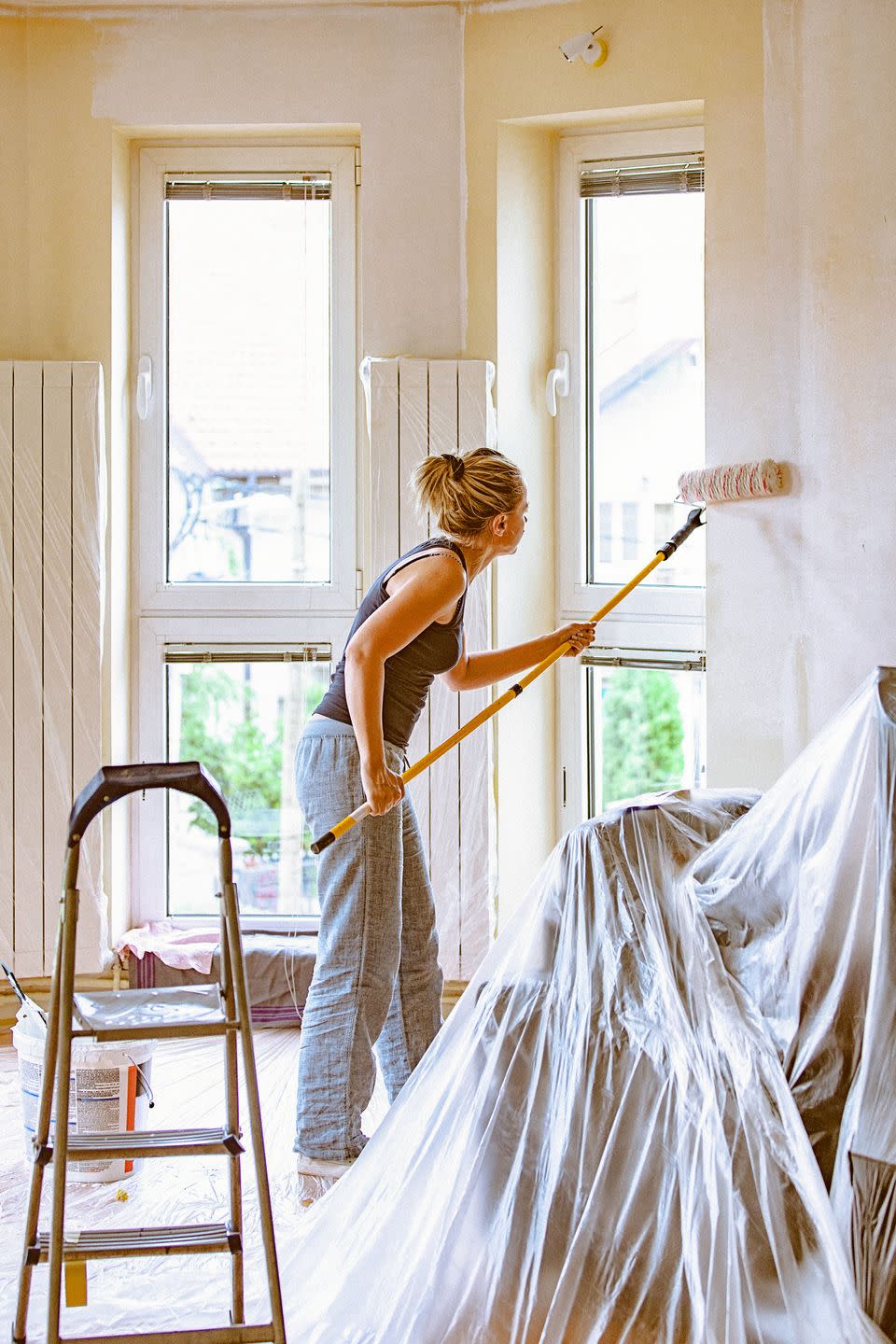You, Too, Can Paint a Wall Like a Pro! Just Follow These Steps

"Hearst Magazines and Yahoo may earn commission or revenue on some items through the links below."
Painting a wall is one of the easiest ways to freshen up a room fast and with little cost. Plus, it's not too hard to do as a beginner with an end result that looks professional—as long as you follow some essential steps and simple techniques.
First, the fun part: Pick a color. For inspiration, check out our editors' all-time favorite paint colors. You might find our guides to the best white paint colors, kitchen colors, and bedroom colors helpful too. From there, make sure you have all the supplies you need including your paintbrush, roller, and painter's tape (see our shopping list at the end).
Now that you're ready to paint your wall, where do you start? With prep work. You may need to remove wallpaper. But even if you are just painting over old paint, you'll still want to fill holes, dust walls, protect surfaces, and prime, if needed. Then, make sure you're using the correct painting technique to get smooth, even wall coverage. We walk you through it all, step by step—and even share tips on how to paint stripes on a wall, if you're up to the challenge.
Part 1: How to Prep Walls for Painting
First, remove all furniture or move it to the center of the room, and roll up any rugs. Use a drop cloth to cover any surfaces in the room to keep them clean.
Using a putty knife, fill all nail and screw holes with putty, overfilling each hole slightly. When putty is dry, use medium-grit sandpaper to smooth away any excess.
If necessary, caulk spaces between trim/baseboards and wall. Run a line of caulk along the space, and then immediately use a wet sponge to remove excess. Let dry.
Wipe down walls with a sponge dipped in warm water. If the floor is carpeted, vacuum.
Use painter’s tape to tape off all trim work, outlets, and other permanent structures. Be sure the edge of the tape lines up exactly where the wall meets the trim for a clean line.

Part 2: How to Paint Walls
If primer is needed (if you’re painting a lighter color over a darker color, or if you're painting bare drywall, for example), pour just enough primer into a painter’s tray so that it covers the bottom but doesn’t pool up the sides. This will keep it from drying out and causing drips. (You can also use an inner-fed paint roller to eliminate the need for a paint tray.) Prime walls, and let dry according to package instructions.
Next, paint the walls themselves. Start by pouring mixed paint into a small container (small enough to hold in one hand). Dip a two-inch brush only about a third of the way into paint, then tap brush against side of container to remove excess and prevent drips. Paint the areas around the trim, cutting in about two or three inches from tape. Work in four-foot sections to prevent marks that appear when paint starts to dry.
Use a roller to paint larger sections of the wall. Fill a paint tray in the same manner you did with primer. Dip roller into paint, using top of tray to remove excess. Roll paint onto wall in three-foot sections, painting in a W motion. Without lifting the roller from the wall, fill in empty spaces with vertical strokes. This will ensure even coverage.
Continue steps 2 and 3 until the entire wall is covered.
Part 3: How to Paint Stripes on a Wall
Let base coat dry for 48 hours.
Using a tape measure, measure the wall you’d like to paint. Divide the length by the number of stripes you’d like.
Starting in the least conspicuous corner, divide the wall into sections. Mark each width lightly with a pencil.
Using a laser level, draw vertical lines with pencil the entire height of the wall. Place painter’s tape along the line. Make sure the tape is on the correct side of the line so stripes are even.
Repeat step 4 across entire wall.
Use a burnisher or credit card to press edges of tape down so paint doesn’t seep through.
Using a paint roller, paint stripes on wall. Be sure to paint over the tape for even lines.
Before paint dries entirely, remove painter’s tape from wall. Let paint dry before replacing furniture and decor.
You Might Also Like

